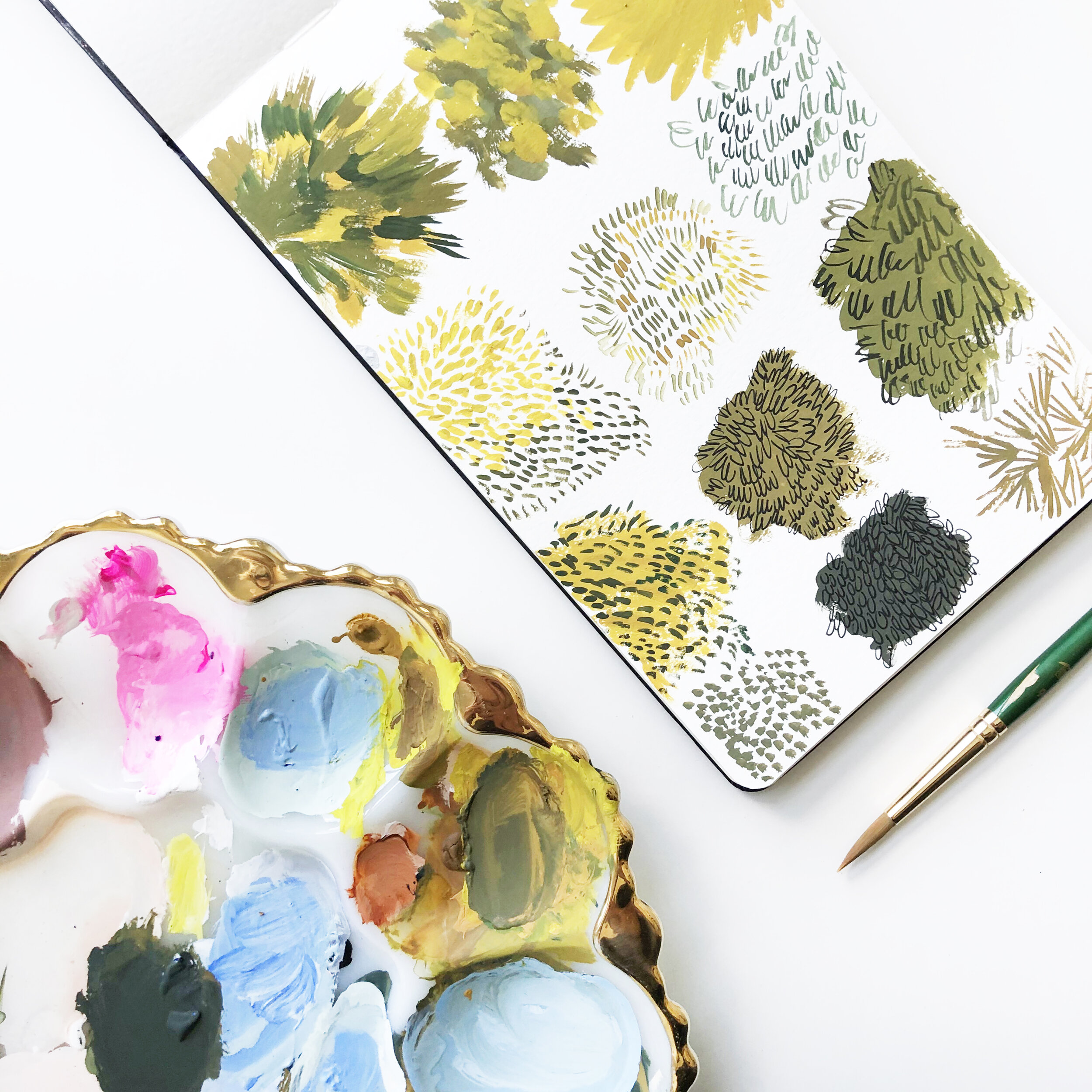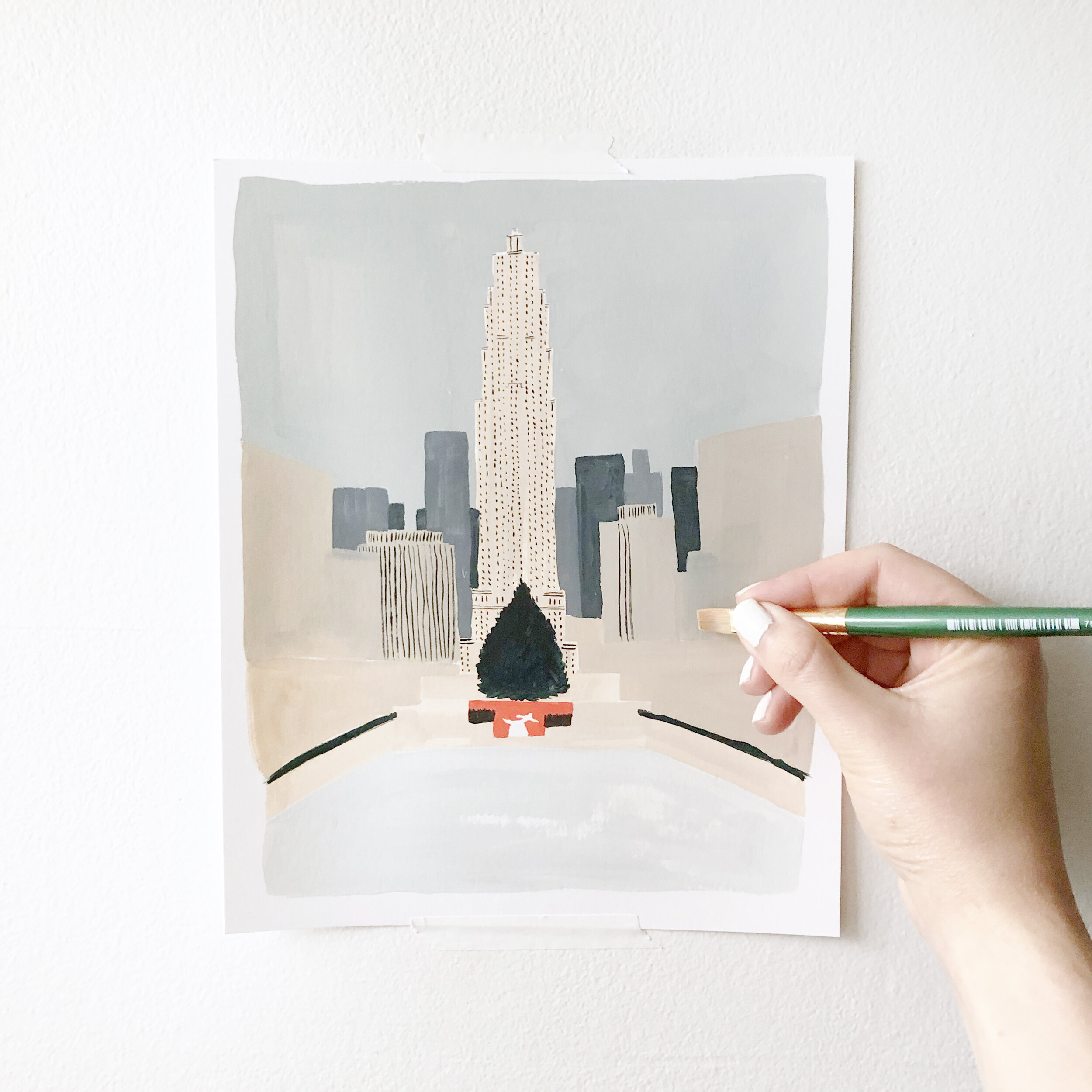Everything Beginners Need to Know About Gouache
This week, I’m covering gouache application basics - how to be successful with gouache right out of the gate.
Luckily, gouache (pronounced “gwash”) is a very intuitive medium. There’s barely any learning curve at all. It’s similar to watercolors, in that its water based - meaning you can rewet the paint. You don’t need nearly as much water as with watercolor though. Just a little bit will change the texture of your paint drastically. You apply gouache more like an acrylic, where can layer your colors. To me, it’s the perfect medium for beginners and experts alike.
That being said, there are a few things you should know, especially if you’ve never used gouache before.
Gouache is not completely opaque.
This is the biggest misconception I had in the beginning. Everyone says gouache is opaque, and it almost is. Because gouache is water-based, you will always see a bit of the colors underneath. It’s best to apply light colors first, and layer dark colors on top. You’ll never be able to apply a pastel shade on a dark background without a “murky” effect. My process is to sketch first and then block in large areas of color - keeping the light areas separate from the dark. After that, I layer darker detail work on top.
You can rewet your paint, but not if you want a really opaque application.
I love rewetting my paint, but it’s not quite the same as getting fresh paint out of the tube. Don’t feel bad about leaving dried up paint behind on your palette. If you do, your work will pay the price. I lose a lot of paint in my process. Use what you can, and leave the rest behind. I find rewetting paint works best when mixing pastel shades. Adding a little white to a dried up darker color creates the best effect. Trying to reuse darker colors isn’t as easy.
If applied too thick, your paint can crack.
I learned this the hard way. Beware of slathering your paint on really thick. Gouache is different from oils and acrylics in this way. You can’t use a palette knife and slop on colors to create texture. Your paint will probably crack, and may even fall off your paper in pieces. You can get a pretty thick, opaque layer of paint, but don’t expect to see texture in the paint strokes.
Beware of liquids.
Because gouache is water-based, a spilled drink or a splash of water will ruin your work. One time, I spilled tea all over my sketchbook, and it was a disaster. It’s ironic, because you need water to use the paint, making your work zone feel dangerous at times. Just be sure to keep your water cup off to the side, and lids on drinks. Be careful not to put too much water on your brush, so it doesn’t drip onto your paintings.
Don’t contaminate your paint.
You never want to dip a brush directly into a paint tube. Even putting it near the surface of the tube is dangerous. A little bit of paint will contaminate the entire tube. I once dipped a paintbrush covered in pink paint into the top of a white tube, and the white paint had pink streaks until the last drop. Gouache isn’t cheap, so this is something you want to avoid. Always squeeze your paint onto your palette to mix colors.
Use Watercolor Paper.
Any other paper will wave when you apply gouache, since the paint is water-based. Gouache isn’t really meant for canvas or wood panels either.
Everyone will make these mistakes at some point, and then learn from them. I’m only writing this article as a result of trial and error. In the beginning, it’s so important to get a feel for how the paint works. Don’t dive right into a painting. Just practice painting blocks of colors. Add different amounts of water to see how the paint handles it. Once you get a feel for gouache, you’ll never go back. It start to feel as easy as writing with a pencil. Once you get past these nuances, you’ll get to enjoy how amazing it is. It’s portable, dries fast, and doesn’t have a smell to it. I’ve used every medium out there, and I swear it’s the best one out there.













Thanks for stopping by! I’m an illustrator & writer. I’ve been running my own creative business since 2015. My mission is to help artists find their unique creative voice, build positive habits, and do what they love for a living.